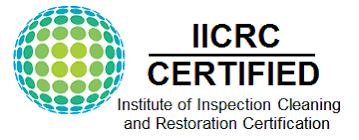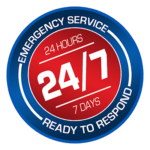The invention of the fire has been one of the milestones towards development. The ancient man learned the use of fire mostly to cook food and generate heat and light to keep them warm during the cold nights. With time, man learned to use fire for rituals, agriculture, smelting of ores, forging, incineration of wastes, cremation, and as a devasting weapon for destruction.
What is Fire Damage?
The size and extent of damage caused by fire may vary, but the damage can be devastating. Fire can be caused due to some faulty electrical appliance or from the kitchen. Cooking fire can cause extensive damage to your home. An electrical short circuit might be the culprit for damaging your workplace.
Fire Damage and Restoration
Fire damage can leave you devastated, and dealing with the aftermath of fire damage can be overwhelming. Fire damage repair can be done by professionals trained and experienced in the restoration of damages caused by fire. It is expected that you may be stressed and might need professional help to cope with the trauma. Be it home or professional workplace, fire damage can sweep you off your feet. Addressing fire damage involves several processes.
#1: Assessment
The first step always involves assessing the damage. When a house or workplace is damaged by fire, all the systems are compromised. You need to identify the extent of damage so that you may plan for the restoration. The walls and floors may be churned and covered by soot. A strong, pungent odour can fill up the whole compound. Your favourite dresses, curtains, or tapestries might be lost forever. Getting back the wooden furniture would be next to impossible.
#2: Mitigation
Once the assessment of damage is done, the professional team might be involved in mitigating the damage. Since most of the house’s systems would be compromised, there are chances that the house might be filled with water used by the fire fighting team to subdue the flames. The first thing would be to remove the accumulated water and turn off the water supply. Shutting off the electricity supply is a must. It is essential to ensure that there are no gas leaks. The smouldered ashes are also to be removed.
#3: The Cleanup
Once the assessment is followed by mitigation, the professional team would involve in the cleanup process. Incorporation of advanced techniques and equipment makes it easier for cleaning up the derbies of fire damage. Smoke, soot, dust, and ashes are to be removed from the surfaces. The firefighters might have dumped gallons of water to subdue the flames, and professionals from Restoration Company in Toronto are experienced to clean up such mess in a short period.
#4: Restoration
When the mess is cleared, you need to proceed with the restoration. The damaged or burnt components need to be replaced or repaired. In most fire damage cases, you might not get the household items in a good state, and replacement would only be the solution. The walls would need a coat of fresh paint, while the carpets, curtains, cabinet, and furniture need replacement.
#5: Smoke and Soot
Every fire damage invariably causes an accumulation of smoke and soot on almost every household component or workplace damaged with fire. Apart from damaging the household appliances, soot can be hazardous for health and can cause substantial damage even from a distance. Sanitizing the walls, floor, ceiling and drying it thoroughly to reduce odour and growth of moulds is necessary. Sodium triphosphate can be used to reduce the pungent burnt smell. Bleaching agents might be used to remove the soot from the clothes, furniture, curtains, or draperies.
How to Clean Up Fire Damage?
Cleaning fire damage needs to be done by professionals because of the acidic nature of the cleaning chemicals. Moreover, the burnt smell, smoke, soot, and volatile substances can be hazardous for health and life. Cleaning professionals from Emergency101 are trained to deal in such circumstances.
#1: Water Damage and Clean-up
The process of subduing flames with water or chemicals can cause substantial damage to your property. The accumulation of water can cause permanent damage to the property and instigate the growth of moulds. The water from the fire hose might damage the carpets, tapestries, or curtains. Professionals from Emergency101 are equipped with high-speed vacuum cleaners that can suck the water and dry the surface.
#2: Soot Removal and Cleanup
Soot is the aftermath of the fire and is formed from incompletely burnt materials. Soot is composed of carbon and can penetrate porous surfaces of tapestries, carpets, clothes, and furniture. The longer the soot is present, the more difficult it is to remove them.
#3: Smoke Damage Cleanup
After fire damage, the smell of smoke would cling on to the house and its components. The traditional cleaning method might reduce the smoke smell, but you would need professional care to eliminate smoke permanently.
Why is Professional Cleaning Necessary?
Visiting a house after fire damage is hazardous and needs special training. Cleaning professionals from Emergency101 are equipped with masks, gloves, boots, and special equipment to handle the hazardous smoke, chemicals, and soot.


